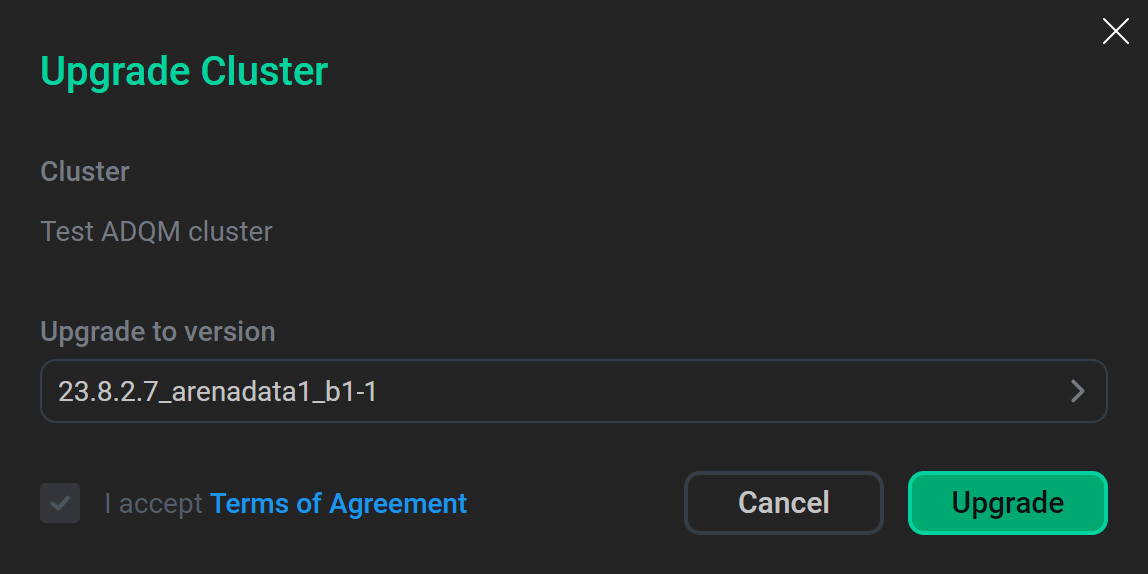

Cluster actions
You can manage an ADQM cluster on the Clusters page in the ADCM UI.

Refer to ADCM documentation for an overview of the Clusters page and common actions.
Manage a cluster
Click the icon
to open a drop-down list with available actions and select an action to run it. A set of available actions depends on the cluster state:
-
For a new cluster (the cluster state is
created), an available action is:-
Install — installs all cluster services.
-
-
After a cluster is installed (the cluster state is
installed), the following actions are available:-
Check — checks if all components of the installed cluster work correctly.
-
Manage Kerberos — allows you to enable, reconfigure, and disable Kerberos authentication.
-
Manage SSL — allows you to configure and enable/disable SSL encryption for services of the ADQM cluster.
-
Reinstall status-checker — reconfigures and restarts the status checker for all cluster services. Use this action when migrating a cluster to a new ADCM server.
-
-
For a cluster prepared for upgrade (the cluster state is
upgradable), an available action is:-
Upgrade — upgrades the cluster version.
-
Upgrade a cluster
To upgrade an ADQM cluster version, you need to upload a new bundle first — see the step Upload a cluster bundle to ADCM in the Create a cluster article.
After a new bundle is loaded, open the Clusters page. The icon becomes active for the ADQM cluster in the Actions column. Click this icon — in the Upgrade Cluster window that opens, select a version to upgrade ADQM and click Upgrade.

In the confirmation dialog window that appears, click Run.

As a result, ADCM changes the cluster state to upgradable — the cluster is ready for upgrade. Click the icon
in the Actions column and select the Upgrade action.

In the dialog that opens, click Run to confirm the upgrade. Once the upgrade process is complete, ADCM will change the cluster state to installed.
|
NOTE
When upgrading ADQM from the version 23.3.2.37.1.b1 (minimum) to 24.3.2.23.2.b1 and higher in ADCM starting with the version 2.3, a cluster prepared for the upgrade has the |